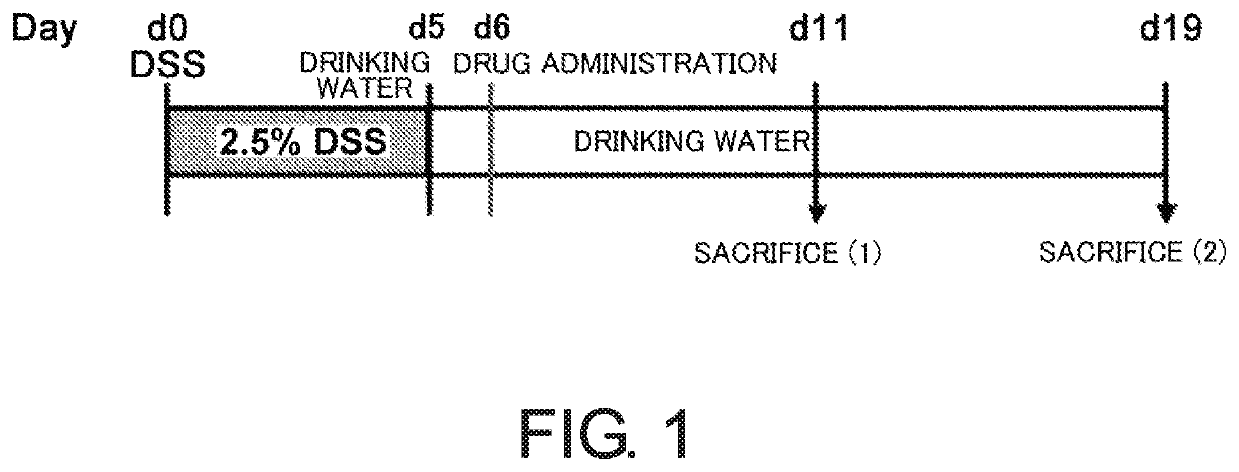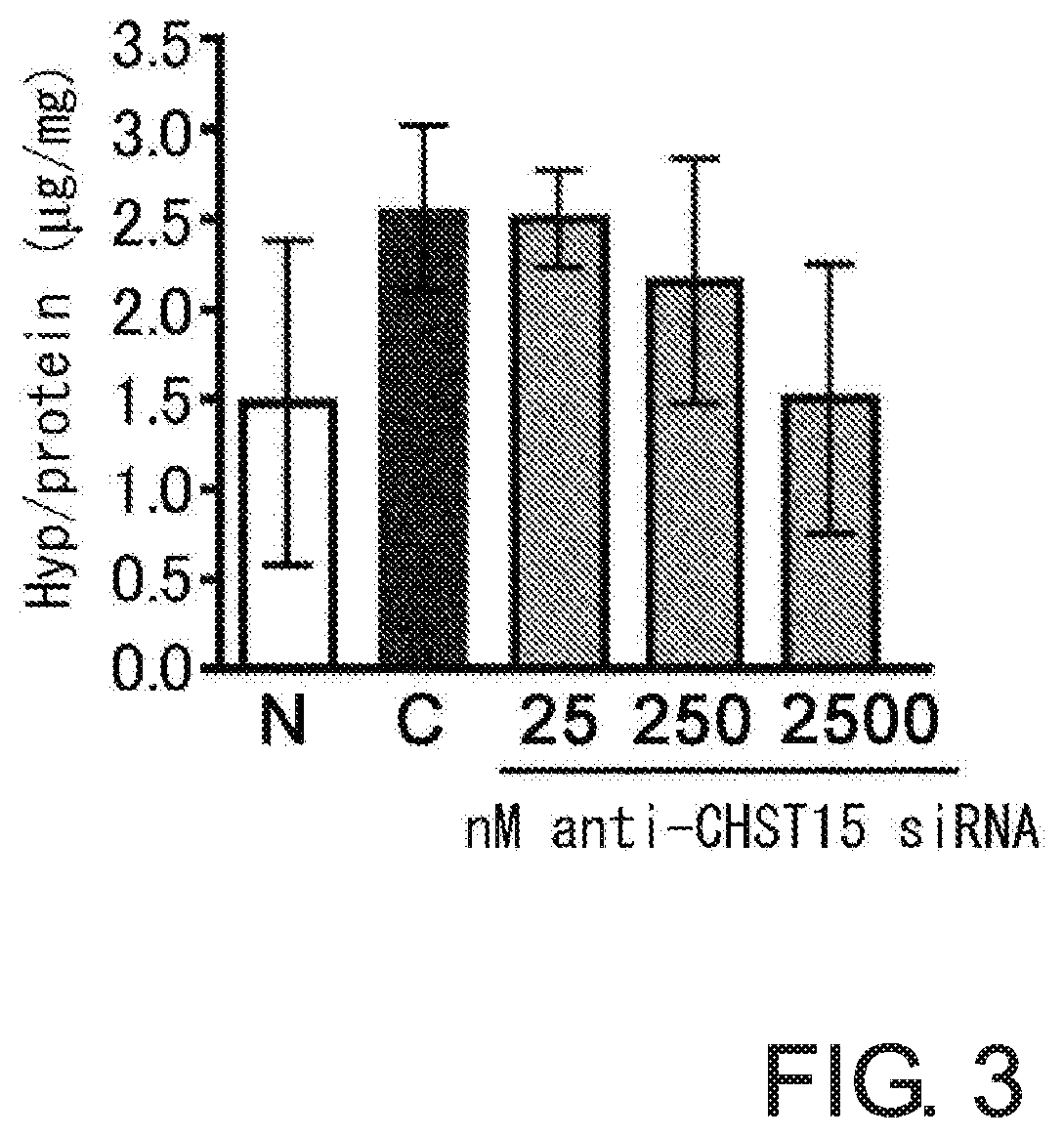Mucosal healing promoter
a technology for mucosal healing and promoters, applied in the direction of transferases, drug compositions, immunological disorders, etc., can solve the problems of decreased physical strength, increased qol, and increased inflammatory and ulceration of the gastrointestinal tract, so as to suppress the expression of the human chst15 gene and the effect of suppressing the expression of the gen
- Summary
- Abstract
- Description
- Claims
- Application Information
AI Technical Summary
Benefits of technology
Problems solved by technology
Method used
Image
Examples
examples
[0102]Hereinbelow, the present invention will be specifically described with reference to the EXAMPLES, but the technical scope of the present invention is not to be construed as being limited thereto.
[0103]“Anti-CHST15 siRNA” described in the EXAMPLES herein is an siRNA having a structure in which the RNAs of SEQ ID NOs: 3 and 4 are hybridized.
[Objectives]
[0104]The anti-CHST15 siRNA was assessed for its therapeutic effect in chronic colitis model mice induced by dextran sulfate sodium (DSS). This model shows inflammatory fibrotic lesions in the mucosal and submucosal layers, which coincide with inflammatory fibrotic lesions accompanied by submucosal thickening observed in patients with Crohn's disease, and thus, the model can be used to evaluate the therapeutic effect on lesions.
[Methods]
[0105]Drinking water was switched to regular water 6 days (from Day 5) after the start of 2.5% DSS consumption. On the seventh day (Day 6), the mice were administered in the submucosa of the large ...
PUM
| Property | Measurement | Unit |
|---|---|---|
| distances | aaaaa | aaaaa |
| distances | aaaaa | aaaaa |
| distances | aaaaa | aaaaa |
Abstract
Description
Claims
Application Information
 Login to View More
Login to View More - R&D
- Intellectual Property
- Life Sciences
- Materials
- Tech Scout
- Unparalleled Data Quality
- Higher Quality Content
- 60% Fewer Hallucinations
Browse by: Latest US Patents, China's latest patents, Technical Efficacy Thesaurus, Application Domain, Technology Topic, Popular Technical Reports.
© 2025 PatSnap. All rights reserved.Legal|Privacy policy|Modern Slavery Act Transparency Statement|Sitemap|About US| Contact US: help@patsnap.com



